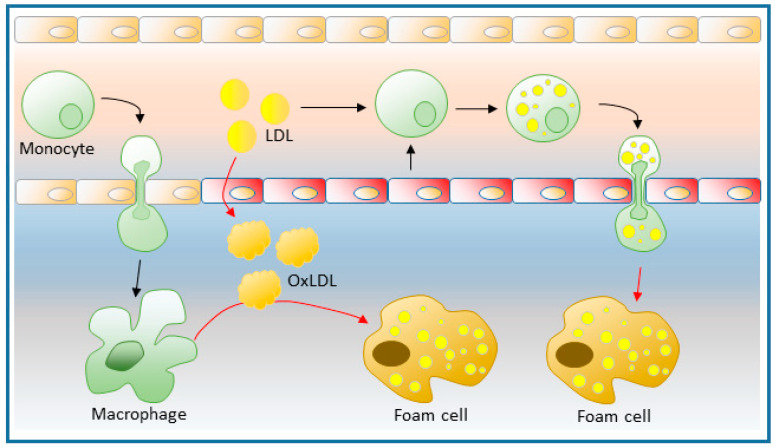Figure 2.
Role of monocytes and macrophages in the initiation of atherosclerotic plaque formation. Different factors leading to endothelial damage promote increased permeability to LDLs and facilitate the entry of monocytes into the subendothelial space, where they differentiate into macrophages. These increase the expression of scavenger receptors, which are responsible for endocyting oxidized LDL, and turning into foamy macrophages, which will be the main cause of the development of atherogenic plaques. In a state of dyslipidemia, circulating monocytes may form LD before migrating to the subendothelial space. This process may occur by the uptake of excess LDL, and also by interaction with products released by activated endothelial cells. The formation of foamy monocytes is accompanied by their inflammatory activation, which makes them more prone to subendothelial migration and thus more atherogenic.

